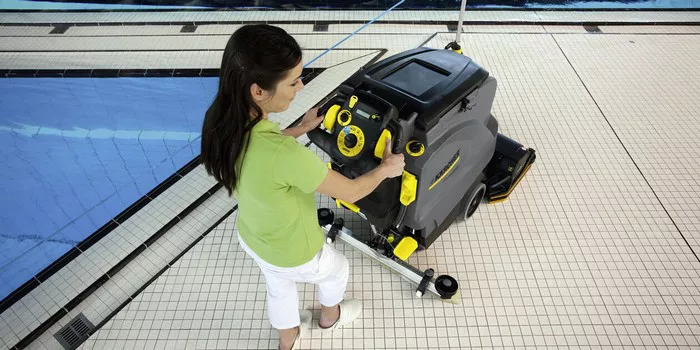Air quality is a critical aspect of indoor environments, affecting health, comfort, and productivity. In recent years, air scrubbers have emerged as essential tools in maintaining clean and healthy indoor air. This guide aims to provide a comprehensive understanding of what air scrubbers are and how they work.
What is an Air Scrubber?
An air scrubber, also known as an air purifier or air cleaner, is a device designed to remove contaminants from the air within a specific area. These contaminants may include particles such as dust, pollen, pet dander, mold spores, and volatile organic compounds (VOCs) emitted by household products or building materials. Air scrubbers are commonly used in residential, commercial, industrial, and healthcare settings to improve indoor air quality.
How Does an Air Scrubber Work?
Air scrubbers employ various technologies to effectively remove pollutants from the air. The most common mechanisms include:
1. Filtration: Many air scrubbers utilize high-efficiency particulate air (HEPA) filters to capture particles as small as 0.3 microns with a high degree of efficiency. These filters consist of a dense mesh of fibers that trap airborne contaminants as air passes through them.
2. Ionization: Some air scrubbers employ ionization technology to charge particles in the air, causing them to adhere to surfaces or collect on oppositely charged plates within the device. This process effectively removes particulate matter from the air, reducing overall pollution levels.
3. Adsorption: Certain air scrubbers utilize activated carbon or other adsorbent materials to capture gaseous pollutants such as VOCs and odors. These materials have a high surface area and are capable of trapping molecules of pollutants as air passes through them.
4. UV-C Light: UV-C light is used in some air scrubbers to disinfect the air by destroying bacteria, viruses, and mold spores. When air passes through the device, it is exposed to UV-C radiation, which damages the DNA of microorganisms, rendering them harmless.
Key Components of an Air Scrubber
While the specific design and components of air scrubbers may vary depending on the manufacturer and model, they typically consist of the following key elements:
1. Air Intake: This is the entry point through which contaminated air is drawn into the device for purification.
2. Filtration System: The filtration system removes particles and other pollutants from the air using filters, ionization, or adsorption.
3. Fan: The fan is responsible for circulating air through the device and pushing it through the filtration system.
4. Air Outlet: After passing through the filtration process, clean air is released back into the environment through the air outlet.
5. Control Panel: Many air scrubbers feature a control panel with settings for adjusting fan speed, activating additional features such as ionization or UV-C light, and monitoring air quality indicators.
Benefits of Using an Air Scrubber
The use of air scrubbers offers several significant benefits:
1. Improved Air Quality: By removing airborne pollutants, air scrubbers help maintain clean and healthy indoor air, reducing the risk of respiratory problems and allergic reactions.
2. Odor Removal: Air scrubbers equipped with activated carbon filters effectively eliminate unpleasant odors caused by smoke, cooking, pets, and other sources.
3. Allergy Relief: People suffering from allergies or asthma often experience relief from symptoms when indoor air is purified with an air scrubber, as it reduces the concentration of allergens such as pollen and dust mites.
4. Mold Prevention: Air scrubbers with UV-C light technology help prevent mold growth by neutralizing mold spores present in the air.
5. Enhanced Comfort: Clean air contributes to a more comfortable indoor environment, promoting productivity and well-being among occupants.
Conclusion
Air scrubbers play a crucial role in maintaining clean and healthy indoor air by removing pollutants and contaminants. By understanding how air scrubbers work and their benefits, individuals and organizations can make informed decisions about improving indoor air quality. Investing in an air scrubber can lead to a safer, more comfortable, and more productive indoor environment for occupants.
FAQs
Q1: Can an air scrubber eliminate all pollutants from indoor air?
A1: While air scrubbers are highly effective at removing a wide range of pollutants, including particles, odors, and VOCs, it’s essential to note that no purification system can eliminate all pollutants entirely. However, air scrubbers significantly reduce pollutant levels, leading to cleaner and healthier indoor air.
Q2: How often should air scrubber filters be replaced?
A2: The frequency of filter replacement depends on several factors, including the type of filter used, the level of airborne contaminants present, and the manufacturer’s recommendations. Generally, HEPA filters should be replaced every 6 to 12 months, while activated carbon filters may need replacement every 3 to 6 months to maintain optimal performance.
Q3: Are air scrubbers noisy?
A3: The noise level of air scrubbers varies depending on factors such as fan speed and design. While some models may produce noticeable noise, especially at higher fan speeds, many modern air scrubbers are designed to operate quietly, making them suitable for use in residential and commercial settings without causing disturbance.

